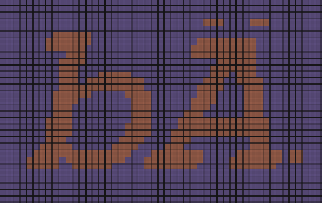Image Processing Reference
In-Depth Information
Fig. 17.1. (
Left
) A binary image and (
right
) a morphological filter.
Red
and
blue
represent 1
and 0 respectively
r
)
g
(
r
)
(
f
⊕
g
)(
r
)=max
r
f
(
r
−
Dilation
(17.1)
f
(
r
−
r
)
g
(
r
)
(
f
g
)(
r
)=min
r
Erosion
(17.2)
where
r
is varied through all admissible points of the image
f
. With this definition,
dilation and erosion differ from convolution only in that the integration/summation
is replaced by max and min functions. Each of these operations qualifies to be called
a filtering. These filterings are nonlinear and can be applied several times, one after
the other and in various orders, to achieve a particular purpose, e.g., to remove a
specific type of noise or to smooth boundaries of regions. Collectively, these opera-
tions are called
morphological filtering
. Since max and min functions are nonlinear,
with scant knowledge on them compared to linear functions, more user experience
on morphological operators in discrete image representation is both necessary and
crucial for their effective application, compared to linear operators. Accordingly, we
first assume that
r
obtains discrete values, i.e., we have a grid by
r
k
, and we discuss
only images and filters that are binary, assuming that they take the values 1 or 0.
Examples of filters yield
⎛
⎞
⎛
⎞
⎛
⎞
111
111
111
111
101
111
1
0
1
G
3
=
111
⎝
⎠
⎝
⎠
⎝
⎠
G
1
=
G
2
=
G
4
=
(17.3)
for discrete, multidimensional functions follows from
Eqs. (17.1) and (17.2) except that now
f
and
g
are discrete binary images that we
choose to represent by
F
and
G
for convenience. In 2D, these functions are defined
on a 2D grid, a matrix, whereas in 3D and higher dimensions the functions are de-
fined on discrete arrays that are multidimensional grids. Given a discrete
grid
and
the binary image defined on it, the
morphological operations
are then defined as:
The definition of
⊕
and
(
F
⊕
G
)(
r
k
)=max
r
l
F
(
r
k
−
r
l
)
G
(
r
l
)
(17.4)
(
F
G
)(
r
k
)=min
r
l
F
(
r
k
−
r
l
)
G
(
r
l
)
(17.5)



